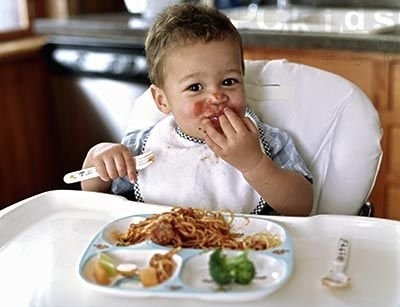每个人都要吃饭。
And consumers increasingly try to consider the environmental effects of their food choices.
而越来越多的消费者在选择食物时会考虑对环境的影响。
For example, if you want to eat meat, how do your choices compare?
比如你想要吃肉,你怎样去比较选择呢?
That's what a group of researchers set out to discover.
这是一组研究人员试图研究的问题。
And they found that raising one animal is dramatically more environmentally draining than all the others:cows.
而且他们发现相比其他动物,牛这种牲畜在饲养上会产生更多的环保排水问题。
The research is in the Proceedings of the National Academy of Sciences.
这项研究已经在《美国国家科学院院刊》上发表。

The scientists noted the challenge in accessing data and creating metrics that can be compared across livestock and to potato, wheat and rice production.
科学家指出在数据访问和创建标准上所面临的挑战,而这一标准可以用于将饲养牲畜同种植土豆、小麦及大米进行比较分析。
They settled on national data from the U.S. Departments of Agriculture, the Interior and Energy.
他们获得了美国农业部,内政部和能源部授予访问国家数据的权利。
The team calculated the production costs by assessing land area, water needs and fertilizer.
这一团队通过评估土地面积、需水量及肥料计算生产成本。
They also analyzed greenhouse gas emissions.
而且分析了温室气体的排放。
Producing pork, poultry, eggs and dairy were between two and six times less efficient than growing potatoes, wheat and rice.
生产猪肉、家禽、蛋类和奶制品要比种植土豆、小麦和大米效率低2到6倍。
And in the current agricultural system, beef uses 28 times more land, 11 times more water and 6 times more fertilizer than the average of the other categories of livestock.
而且在当前的农业系统中,牛肉生产土地使用量是其它牲畜的28倍,水用量是11倍,化肥量是6倍多。
Cattle ranching also creates five times more greenhouse gas emissions.
养牛场还排放了相比其它牲畜而言5倍多的温室气体。
The researchers hope this data will help consumers make informed choices and policy makers create systems that can reduce the environmental costs of what we eat.
研究人员希望这些数据可以帮助消费者做出明智的选择,同时也希望政策制定者们制定我们所吃食物减少所产生环境代价的政策。


